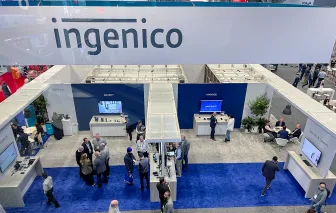Alternative Payments Gain Momentum. Acquirers and Solutions Providers Must Keep Up.
Listen to this article

Cash transactions have been on a steady decline in Canada, decreasing by 59% in volume and 41% in value from 2017 to 2022. Conversely, credit and debit card use is growing. However, with consumer behavior favoring the convenience of digital payments over cash, there is another trend to watch, particularly for small-value transactions. Here’s what acquirers and solutions providers need to know about alternative payments.
What Are Alternative Payments?
In general, alternative payments are any payment method other than cash or a major credit card brand. Largely driven by technological innovation and adoption, alternative payments include:
- Prepaid Cards
Also known as closed-loop cards and sometimes gift cards, this payment type allows consumers to load a pre-designated amount of funds onto the card and use the balance to pay for transactions. Unlike a debit card, there is no direct link to a bank account. Consumers who use prepaid cards like their ease of use, both at the checkout and when reloading them, and how this payment method helps them decrease the risk of overspending.
The Canadian prepaid card market is on a fast growth trajectory. Between 2020 and 2022, the open-loop prepaid market grew 80%, surpassing CAD 9 billion.
- Bank Transfers
Banking transfers, like Interac e-Transfer, are a convenient way for consumers to easily auto-deposit funds from one account to another (peer-to-peer) or request money. Easy, fast, and secure, Interact e-Transfer can even accommodate cross-border payments, simplifying and streamlining the ability for consumers to send money or make purchases internationally.
Growth of bank transfers has reached an all-time high, crossing the threshold of more than one billion transactions over a 12-month period. Particularly popular with Gen Z adults and millennials, this type of alternative payment is favored for splitting the cost of a range of shared experiences. As more younger adults prioritize creating connections through experiences where they can easily pay their share of the cost, bank transfer apps will remain more relevant than ever before.
- Payment Apps
As of 2020, 84% of Canadians owned smartphones. So, not surprisingly, many also use payment apps. Popular payment apps include digital wallets, like Apple Pay, Google Pay, and Samsung Pay, finance apps including PayPal, and apps built specifically for a single merchant, like Starbucks. As more Canadians embrace paying through their mobile phone, more companies will develop their own payment apps to give consumers a fast, safe, and convenient way to pay along with additional loyalty-driven perks.
- Buy Now, Pay Later
This alternative payment method allows consumers to purchase products and services without having to pay in full immediately. BNPL is particularly popular for high-value items, splitting the cost into a pre-determined number of installment payments automatically withdrawn from the consumers’ account over several weeks. Consumers also benefit by avoiding interest charges common with other payment methods such as credit cards or financing plans. It’s anticipated the value of the Canadian BNPL market will increase from CAD 13.37 billion in 2023 to CAD 24.37 billion by 2029. While e-commerce is a growth driver, consumers may also look for opportunities to use this payment method in-store.
- QR Code Payments
QR code payments allow consumers to pay with mobile devices, scanning QR codes and then using their choice of payment method to complete the purchase. To use this payment method, the merchant generates a QR code. Then customers scan the code, which takes them to a payment page to complete the transaction, much like making an online payment. The QR code payment solution then communicates to the in-store terminal that the transaction is approved. Consumers who primarily pay via mobile wallets can use QR code payments for a touchless experience, even if the merchant isn’t equipped to accept contactless payments.
- Cryptocurrency Payments
Cryptocurrencies are legal in Canada, but not considered legal tender, and therefore come with fewer protections including no federal or provincial insurance. While businesses can choose to accept them as an alternative payment method, they do so at their own risk, and they must report those transactions for tax purposes. While this alternative payment method is just emerging for retail transactions, solutions providers should implement payment technology flexible enough to adapt if it – or other new payment types – become more popular in the future.
Where Businesses are Now with Alternative Payment Acceptance
Today, Canadian businesses are positioned to accept a range of payment methods. The breakdown is:
- 73.4% cheques
- 58.9% EFT
- 55.3% Cash
- 54.4% Credit Cards
- 50% Interac e-Transfer
- 38.5% Debit Cards
- 15.2% Wire Transfer
Looking ahead, 75.2 percent of businesses plan to adopt more options, including alternative payment methods.
Acquirers and solutions providers who want to meet demand need to decide whether to build applications or integrations to accommodate new payment methods independently, or partner with a provider equipped to offer a comprehensive range of solutions today.
Android-based payments technology simplifies adding payment solutions and other features at the payment terminal. It also simplifies processes for solutions providers and acquirers; just a single integration with the platform allows them to offer all available payment method options to their clients, including alternative payments.
The payments landscape is changing, and consumers are finding new payment methods they prefer. By partnering with a provider offering a robust range of solutions that enhance functionality at the point of sale, you can help your merchants meet the evolving needs of customers.
Contact us to learn more.










